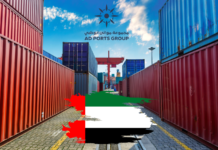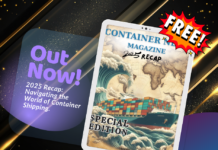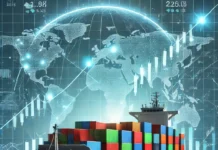
Vespucci Maritime’s Lars Jensen wrote in the Baltic Exchange’s latest commentary that the number of sailings being blanked in the wake of Golden Week is higher than usual, as the container shipping market reaches a crossroads and demand is way below the record newbuilding deliveries.
Sailings are expected to be blanked until 22 October at least.
New vessels are left idle at times out from the yards rather than being put into service immediately.
Sea-Intelligence’s recent data shows that 4% of the global capacity remains unavailable due to continuing vessel delays – roughly twice the normal pre-pandemic level.
Jensen wrote, “The key to watch is whether the aggressive blank sailings programme results in a halt to rate declines during September and potentially begins to reverse the trend despite coming out of the peak season.
“It is clear the demand does not support the carriers’ deployment of capacity in their current networks. It is also clear that the continuing delivery of more new vessels will only make this worse. Unless the carriers change behaviour, we could be facing a much more severe downturn in rates in the coming months.”
Jensen added that trades where spot rates are not at least 30% higher than pre-pandemic are in a poorer state than in 2019.
Citing Hapag-Lloyd’s recent financial figures, Jensen pointed out that the German mainline operator’s operational costs per TEU in Q2 2023 were 29% higher than pre-pandemic.
Jensen explained, “In broad strokes, the Asia-North Europe trade is affected the worst and is in essence, at the same level as seen in the peak season of 2019 before the pandemic. This is problematic as general cost inflation has risen significantly in recent years and furthermore the carriers have had to implement the IMO2020 rules, which means shifting to the much more expensive low-sulphur fuel.”
Transpacific rates are still somewhat higher than pre-pandemic but they cannot be said to be strong. However, the Transatlantic segment is much worse, as trade on this lane grew by more than 10% during the Covid-19 years, compared to around 5% in 2019. Volumes have since collapsed.
Martina Li
Asia Correspondent





